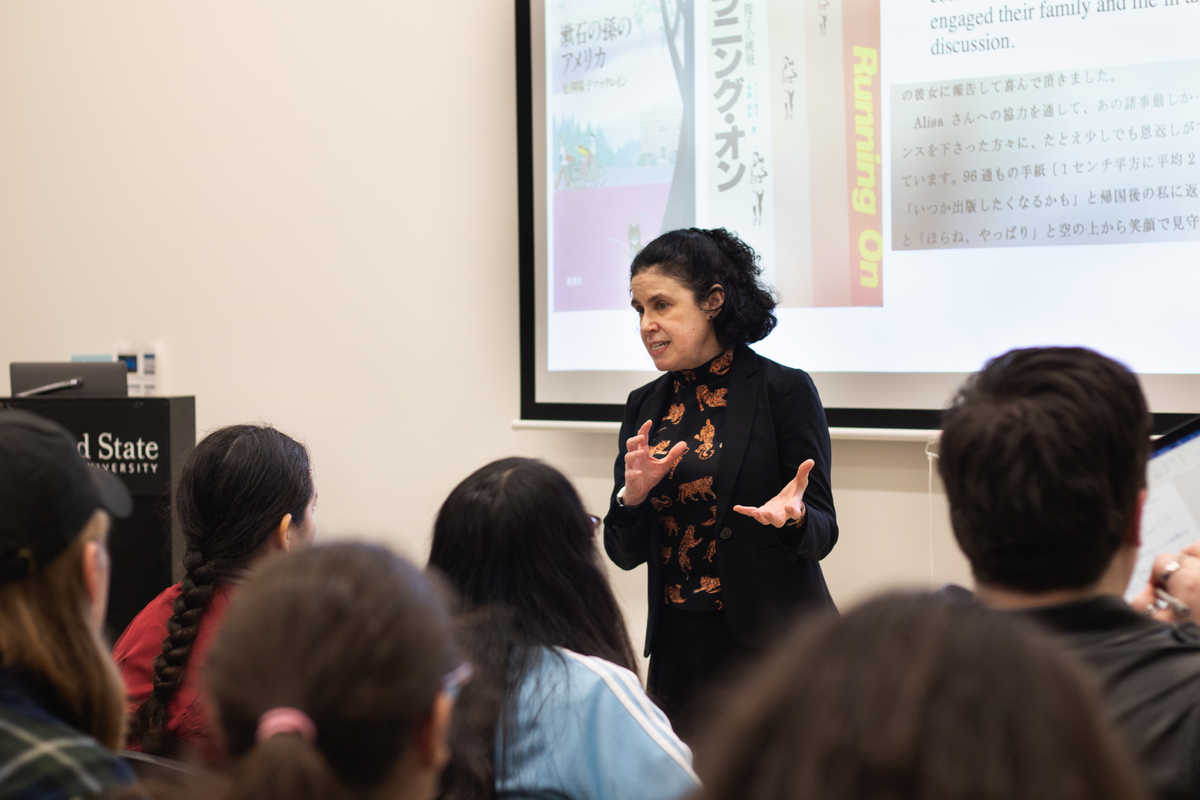Dr. Alisa Freedman, editor-in-chief of the US-Japan Women’s Journal and Professor of Japanese literature and film at the University of Oregon, discussed the topic of her upcoming book, titled, “Cold-War Coeds: The Untold Story of Japanese Students Sponsored by the U.S. Military” on Feb. 13 in Fariborz Maseeh Hall.
Between 1949–1966, the United States Army sent 4,713 Japanese students, including 651 women, to study at American graduate schools for one year with the Government Account for Relief in Occupied Areas and Fulbright Scholarships, otherwise known as GARIOA.
The scholarship covered all travel expenses to and from Japan and living expenses for the year.
“You couldn’t take a lot of money out of Japan, and the exchange rate was so high anyway that scholarships were the only way that many people could travel,” Freedman said.
Over 8,000 students applied to be part of the first cohort of GARIOA scholarship recipients in 1950, and less than 6% were accepted.
The application process required applicants to complete an application entirely in English and pass a rigorous English language exam, followed by a 30-minute interview in English. These interviews were used to gauge the applicants’ ability to “acclimate to and appreciate American life” and to decide what area of the U.S. a student should be placed in.
Finally, applicants needed to pass a health examination. Tuberculosis was common in Japan following WWII and was considered a “national disease.” For this reason, chest x-rays were required both during the application process and right before boarding boats to the U.S.
Scholarship recipients attended orientations before, during and after their arrival in the U.S. These orientations taught students about “American culture” and included skills such as the so-called ladies first mentality, gift-giving and attending dinner parties.
“The scholarships were a part of a larger program to sort of re-educate and reorient the people of Japan through ideas of American style democracy,” Freedman said.
Freedman quoted a U.S. Army report from 1950 that explained their reasoning behind the scholarship programs: “The objectives of the student program is by no means entirely scholastic. In fact, the Army is more concerned that the students take full advantage of this opportunity to learn about and observe American life than it is that they make an outstanding academic mark.”
“They took the English test to see how they would study in the U.S., but that was not the top goal, and the GARIOA students were very confused by that,” Freedman said.
“[Students] thought they were going to America to get an MA. The government’s goal was that these students would get some education in America, but spend most of their time observing how great American style democracy is.”
A propaganda film was played to prospective students in Japan during the later years of the programs. The film began with a Japanese student spending all his time studying, while his American roommate spent his time with friends and ended with the Japanese student assimilating and acting more like his roommate.
Along with the differences between their expectations and reality, some students also had to navigate being the only Japanese students at their schools. They were asked constantly about Japan and to attend international nights. Japanese women were also often asked to wear kimonos.
“I’ll ask a question like, ‘Did you find yourself discriminated against?’ and they’ll say ‘Oh no, everyone was quite kind to me.’ I’ll try to rephrase the question, ‘Did anyone treat you differently because you’re Japanese?’ ‘Yes they did,’” Freedman said.
Even though the original goal for the program may have been to promote American culture, many students made the most of the educational opportunities they were given.
At a time where being a housewife was the middle class ideal, female exchange students became translators, professors and university chancellors.
“A lot of the women were taking the chance of getting an education in a different country,” said Akio Sato, a Japanese studies major who attended Freedman’s presentation. “Even though it was kind of under an insidious means, many of them were aware of that but they wanted the chance regardless because it was something for women, especially in the ‘40s and ‘50s, had such a niche role in Japan especially considering education and careers.”
“What I’m very interested in is that this is a very ideological fellowship meant for Japanese students to learn about America, but what I am learning is that America also learned a lot from these women,” Freedman said.
